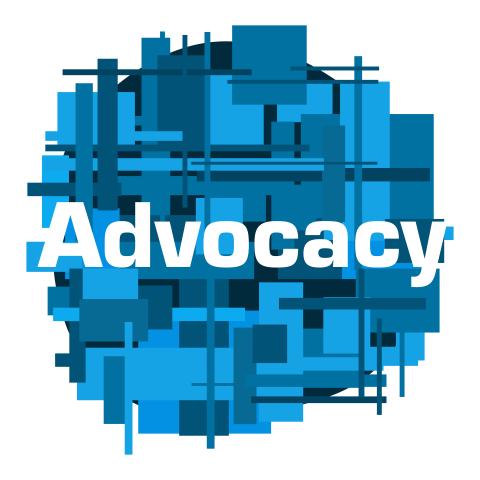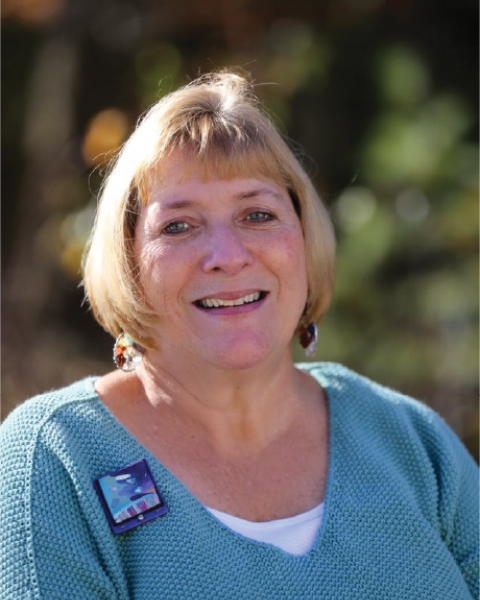Advocacy in Changing Times
The Importance of Advocacy

Disability advocacy is necessary whether it is online or in person. However, in-person advocacy has a social aspect that cannot be matched online. It’s easier sometimes to discuss an issue with people in person because you can tell if you are getting your point across. Loneliness is a real issue for some people, and this is especially true for many of us with disabilities. Just being together is essential, but both in-person and online advocacy are valuable tools.
I have always understood that advocacy is a tool that can create change and opportunity, not only for myself but for others in the disability community. Learning to take charge of our lives and make decisions for ourselves is part of becoming an adult and living a good life. Everyone should participate in their own lives to the fullest extent possible, even if they need support to do so.
Issues, such as employment, education, transportation, and health care are important to the wider community, but access to these rights and services are often difficult for people with disabilities. The importance of testifying about these challenges with policymakers cannot be overstated. Advocating for changes that are important to everyone can develop more inclusive communities.
I thought it would be interesting to talk with Crystal Johnson, the president of People First of New Hampshire (PFNH), an advocacy group run by and for people with IDD in NH, about how advocacy meetings have changed since the COVID pandemic.
Crystal said, “It’s hard to focus on things when you are at home. It is easier when we are all in the same room…I really miss seeing everybody in person, it was a lot more fun. But at least we get to meet in person sometimes. I think we can get more accomplished in person. I do like that we don’t have to worry about transportation all the time, and sometimes it is easier to get on the computer.”
I remember a time before the COVID-19 pandemic when I didn’t have transportation to an important advocacy meeting. I asked the chairperson if I could attend the meeting virtually, and she looked at me and said, “No, we don’t have the technology.”
It took the pandemic to make it happen, and now I attend more virtual meetings than I ever thought possible. Teleconference applications such as Zoom or Teams have made the world a lot more accessible.
In many ways, virtual meetings are almost considered the norm and not even an accommodation anymore. For example, I’m now able to go to national online meetings hosted by the Self Advocacy Resource and Technical Assistance Center (SARTAC) because I have the technology and know how to attend. These meetings are fun and informative because I meet people from all over the United States. Who would have thought that was possible? It’s like being on the Jetsons! I also enjoy virtual meetings because you don’t have to worry about transportation and finding a driver and the commute to my home office is only five seconds.
Social media applications, such as YouTube, Facebook, Instagram & X (formally Twitter), and websites, have also changed the way disability advocacy is done. Internet campaigns such as, Spread the Word to End the Word, Not Dead Yet, and Stop Special can get their message out instantly to an infinite number of people.
Although virtual meetings and social media have changed the face of disability advocacy, it’s not always accessible for everyone. Some people living in rural areas do not have internet access or the technology needed to engage with people virtually.
Older people with disabilities, who did not grow up with the internet, often find it challenging to navigate a virtual world. For instance, I did not get my first computer until I was about thirty-six. I thought I had to be a much better typist to use a computer. Good thing that’s not true or I wouldn’t be writing this blog. Also, internet platforms are far from perfect. Some of them don’t have accessibility features such as screen readers, speech-to-text, or image descriptions.
Another issue is that some people hide behind their computer screens. Not having to be in person makes many people feel like they can say whatever they want, even if it is insensitive. Not being in person removes a sense of accountability. People with disabilities face prejudice every day, and the internet can be just another place for that.
From Where I Sit: A Little History
Late in the 1960s, Bengt Nirje director of the Swedish Association for Persons with Mental Retardation, organized a club, the members were young adults with intellectual disabilities (IDD) and college students. There were no leaders in the club. The purpose of the club was to plan an outing in the community and meet afterward to talk about the experience. Nirje’s idea was to provide typical community experiences for club members with IDD, which sometimes involved risks. The college students were expected to allow fellow club members with disabilities to make their own decisions, even if they made mistakes. Nirje published a paper about the experiences of the group, titled Towards Independence.
This paper illustrated the idea that there is dignity in risk and that we can all learn from our mistakes and make better decisions. It was considered radical but as a result the Parents Association, We Speak for Them, began organizing conferences for their adult children.
This was the first time adults with disabilities could talk about issues that were important to them, e.g., job training, better wages at the sheltered workshop, and recreational activities.
News of the conferences spread to England and Canada. In 1973, three people from Salem, Oregon attended an advocacy conference in British Columbia, Canada, and when they came home to Oregon, they were energized and excited because everyone was speaking for themselves. They wanted to have a conference of their own. In 1974, during the planning for the conference, a man spoke up to say, “I am tired of being called mentally retarded, and aren’t we all people first?” That’s how the organization got its name, People First.
So what? Why does it all matter?
Advocates will never let us go back. The origin of the advocacy movement matters because it illustrates the power of just a few voices of change. The concept that there is dignity in risk seems so simple, but it’s really all about believing in human potential despite the label of disability. In this community, there will always be a need for advocacy. Whether we advocate for change one person at a time or if it happens globally through the web, it doesn’t matter as long as people keep advocating for a better future. Disability advocacy is the only path forward!
